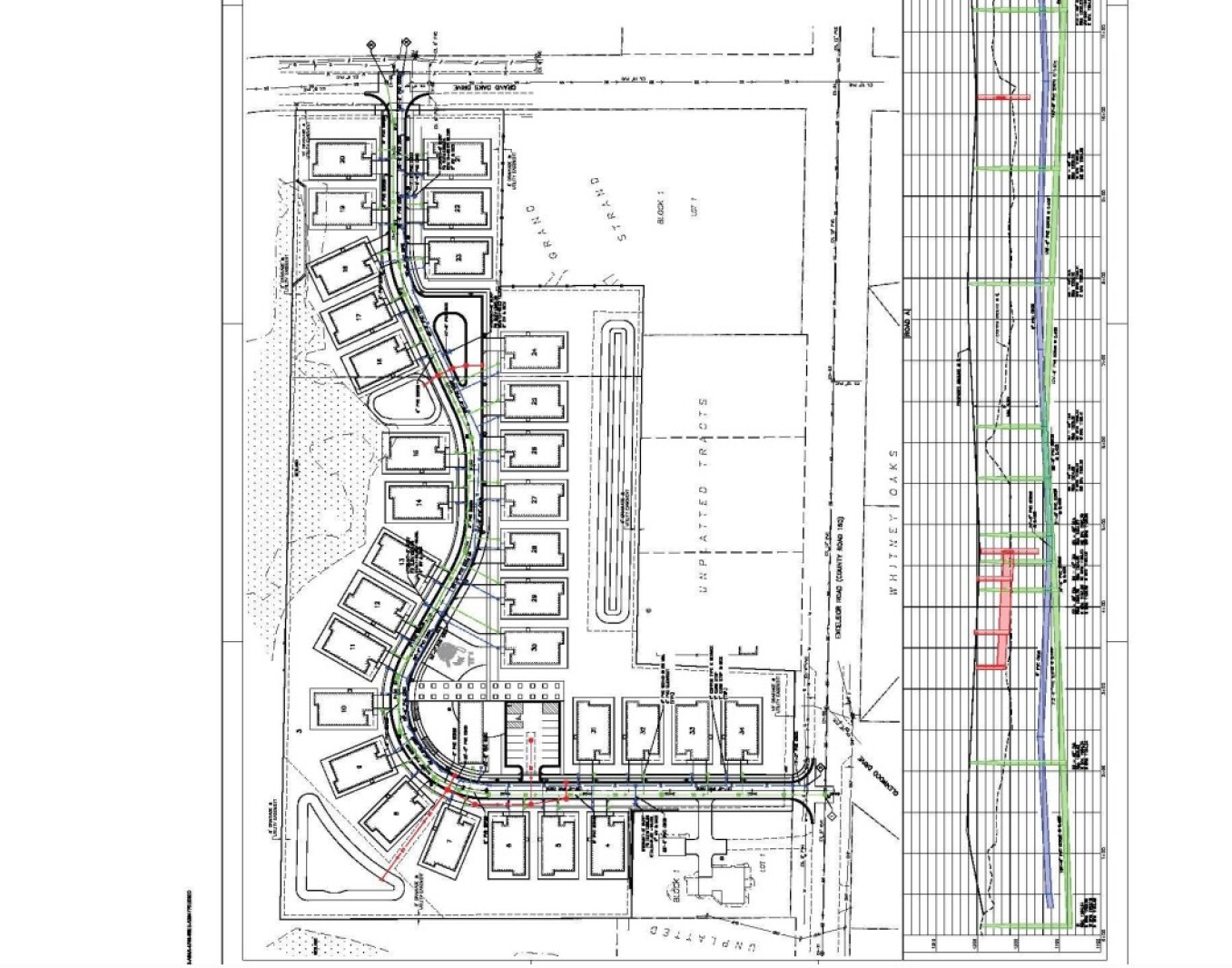Report on the Military Strike in Kherson and its Implications for Sustainable Development Goals
1. Incident Overview
On the morning of October 24, 2025, Russian forces conducted a military strike on the city of Kherson. The attack targeted multiple areas, including the Korabelnyi District in the western part of the city and the Dniprovskiy District in the east. According to reports, the weaponry employed included Multiple Launch Rocket Systems (MLRS) and Shahed-type Unmanned Aerial Vehicles (UAVs).
2. Impact on Civilian Population and Infrastructure
The attack resulted in significant human casualties and damage to civilian infrastructure, directly undermining fundamental development objectives. The consequences are detailed below:
Human Cost
- Fatalities: Two individuals were killed.
- Injuries: A total of 21 people were wounded, including three children. An additional three individuals were injured in a separate drone strike on a residential building.
Infrastructure Damage
- Damage to multi-story residential apartment buildings.
- Destruction of private homes.
- A reported strike on an unspecified critical infrastructure facility.
3. Analysis of Conflict in Relation to Sustainable Development Goals (SDGs)
The strike on a civilian-populated urban center represents a severe setback for the advancement of several Sustainable Development Goals.
SDG 16: Peace, Justice and Strong Institutions
This event is in direct opposition to the core targets of SDG 16, which aims to significantly reduce all forms of violence and related death rates. The targeting of urban areas, particularly with weapons like MLRS noted by some observers as “entirely inappropriate” for precision strikes, undermines peace and security. It highlights a failure to protect civilians, a fundamental component of justice and institutional accountability in conflict.
SDG 11: Sustainable Cities and Communities
The attack directly compromises SDG 11, which seeks to make cities and human settlements inclusive, safe, resilient, and sustainable. By damaging and destroying residential buildings, the strike renders parts of the city uninhabitable and unsafe. The destruction of housing and potential damage to critical infrastructure reverses progress toward creating sustainable urban environments and increases the vulnerability of the local population.
SDG 3: Good Health and Well-being
The loss of life and the high number of injuries, including among children, are a stark violation of SDG 3. This goal aims to ensure healthy lives and promote well-being for all at all ages. The physical and psychological trauma inflicted upon the residents of Kherson creates immediate and long-term public health crises, straining local healthcare systems and impeding the community’s overall well-being.
Analysis of Sustainable Development Goals (SDGs) in the Article
1. Which SDGs are addressed or connected to the issues highlighted in the article?
- SDG 3: Good Health and Well-being: The article directly addresses health outcomes resulting from the conflict. It reports on casualties, including deaths and injuries, which is a fundamental concern of SDG 3. The mention of “more than 20 people” being injured and “two” being killed highlights the immediate negative impact on the health and well-being of the civilian population in Kherson.
- SDG 9: Industry, Innovation and Infrastructure: The article mentions the destruction of physical infrastructure. The report that an unspecified “critical infrastructure facility” was hit and destroyed, along with damage to “apartment buildings and private homes,” connects directly to the goals of building and maintaining resilient infrastructure.
- SDG 11: Sustainable Cities and Communities: The core of the article focuses on an attack on a city, Kherson. The shelling of residential areas, including the “Korabelnyi District” and “Dniprovskiy District,” and the damage to a “multi-story residential building” directly undermines the goal of making cities and human settlements safe, resilient, and sustainable. The attack turns a community into a zone of danger, contradicting the principles of SDG 11.
- SDG 16: Peace, Justice and Strong Institutions: This is the most central SDG related to the article’s content. The entire report describes an act of armed violence in a conflict zone. The military strike on a city, resulting in civilian casualties and property destruction, is a direct contravention of the goal to promote peaceful and inclusive societies. The article details a failure of peace and security.
2. What specific targets under those SDGs can be identified based on the article’s content?
- Target 11.5: “By 2030, significantly reduce the number of deaths and the number of people affected and substantially decrease the direct economic losses relative to global gross domestic product caused by disasters, including water-related disasters, with a focus on protecting the poor and people in vulnerable situations.” The military strike described in the article is a man-made disaster. The report of “two” deaths and “21 people” wounded directly relates to the “number of deaths and the number of people affected.” The damage to homes and infrastructure represents “direct economic losses.”
- Target 16.1: “Significantly reduce all forms of violence and related death rates everywhere.” The article is a case study of this target not being met. It explicitly details an act of violence—a military strike—and its “related death rates” by stating that two people were killed and more than 20 were injured.
- Target 9.1: “Develop quality, reliable, sustainable and resilient infrastructure, including regional and transborder infrastructure, to support economic development and human well-being, with a focus on affordable and equitable access for all.” The article highlights the destruction of such infrastructure. The report that a “critical infrastructure facility” was destroyed and “apartment buildings and private homes were damaged” shows a direct regression from this target.
- Target 11.1: “By 2030, ensure access for all to adequate, safe and affordable housing and basic services and upgrade slums.” The attack on residential areas, which damaged “apartment buildings and private homes,” directly undermines the provision of adequate and safe housing for the residents of Kherson.
3. Are there any indicators mentioned or implied in the article that can be used to measure progress towards the identified targets?
- Indicator 16.1.1: “Number of victims of intentional homicide per 100,000 population, by sex and age.” While the article doesn’t provide a rate per 100,000, it provides the raw data needed for such a calculation. It states the number of deaths (“two killed”) and injuries (“21 people were wounded, including three children”), which are direct measures of victims of violence.
- Indicator 11.5.1: “Number of deaths, missing persons and directly affected persons attributed to disasters per 100,000 population.” The article provides direct data points for this indicator: the number of deaths (2) and the number of directly affected persons (21 injured, plus residents of the damaged homes).
- Implied Indicator for Housing Damage (Target 11.1): The article implies an indicator related to the destruction of housing. While it does not give a precise number, it states that “apartment buildings and private homes were damaged” and a “multi-story residential building” was struck. A quantifiable indicator would be the “number of housing units damaged or destroyed.”
- Implied Indicator for Infrastructure Damage (Target 9.1): The report of a “critical infrastructure facility” being “hit and destroyed” implies an indicator such as the “proportion of critical infrastructure damaged or destroyed” due to conflict.
SDGs, Targets, and Indicators Table
| SDGs | Targets | Indicators |
|---|---|---|
| SDG 16: Peace, Justice and Strong Institutions | 16.1: Significantly reduce all forms of violence and related death rates everywhere. | 16.1.1: The article provides the number of victims of violence (“two killed,” “21 people were wounded”). |
| SDG 11: Sustainable Cities and Communities | 11.5: Significantly reduce the number of deaths and people affected by disasters. | 11.5.1: The article specifies the number of deaths (2) and directly affected persons (21 injured) from the man-made disaster. |
| SDG 3: Good Health and Well-being | Connected to the reduction of deaths and injuries from violence and disasters. | The article provides data on mortality (“two killed”) and morbidity (“21 people were wounded, including three children”). |
| SDG 9: Industry, Innovation and Infrastructure | 9.1: Develop quality, reliable, sustainable and resilient infrastructure. | Implied indicator: The number/type of critical infrastructure damaged or destroyed (a “critical infrastructure facility” was destroyed). |
| SDG 11: Sustainable Cities and Communities | 11.1: Ensure access for all to adequate, safe and affordable housing. | Implied indicator: The number of housing units damaged or destroyed (“apartment buildings and private homes were damaged”). |
Source: theins.ru







